|
Displaying items by tag: Picasso
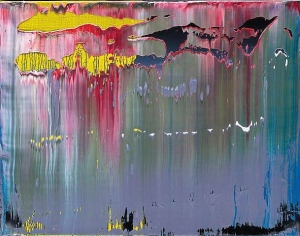
The recent publication of Citi Private Bank Art Advisory & Finance, an always worthwhile newsletter called Art Focus, just profiled the German artist, Gerhard Richter. After riffing on the intense demand for Contemporary, Modern and Impressionist masterpieces of the last few years, Citigroup‘s (C) Senior Art Advisor Jonathan Binstock states, “among the postwar artists fueling this recharge is the German painter Gerhard Richter, who has recently emerged powerfully as the next great market force among the tradition of 20th century painters including Pablo Picasso, William de Kooning and Andy Warhol.”
That’s quite a bold claim. Richter is the prolific 80 year-old artist who was born in Dresden in 1932, and in October 2011 had a major retrospective at the Tate Modern in London open, coupled with a number of works coming up for sale at auction the same month. His huge output over the decades is impressive, and, if there is any theme, it’s his use of photography as the basis for classic paintings. His works of the laid out body of Ulrike Meinhof in the “Baader-Meinhof” series of the 1980s, or even his “Administrative Building” of the “Buildings” series of the same era, are rooted in a strong political worldview. Conversely, his “Apples” or “Candles” paintings are imbued with spiritual elegance and serenity; his abstract paintings are noted for their “overwhelming wall power.” No question, Richter is a major artist of the late 20th century.
But is he an artist who should be ranked with Picasso and de Kooning? Binstock’s bullishness is based on the authenticity of Richter’s work (a classic painter who doesn’t use assistants or shortcut technologies), and the recent run-up in Richter prices, most notably during the October and November auctions in 2011. “Richter has been besting himself regularly at many auction levels since the heights of 2007 and 2008. In the past five years his auction price has approximately quadrupled.”
In February 2007, a record of $5.5 million was reached for the Richter work, Abstraktes Bild (1991). Binstock now says that same work “might be valued around $12 million. Between February 2007 and November 2011, Richter achieved no less than five record prices at auction, making a steeply escalating tear through the Great Recession that seems unrivaled by any other artists.” That is impressive. Even his smaller works, in the hard hit mid market of the $1 million to $5 million range, are “defying gravity in more ways than one.”
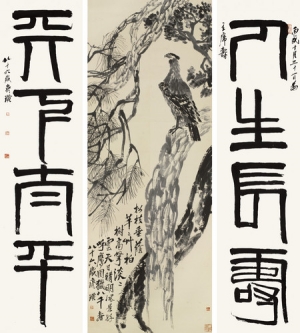
Pablo Picasso has been dethroned.
The world auction market’s top earner in recent years must yield to Chinese artist Zhang Daqian (1899-1983), according to a report from French research company Artprice.
Zhang generated $506.7 million in auction revenue in 2011. Close behind was compatriot Qi Baishi (1864-1957) with $445.1 million. They lead a group of more than 450,000 artists tracked by Artprice. Picasso ranked fourth at $311.6 million.
“When you couple China’s abundance of money and its rich history of collecting in all the categories of art, it’s not a surprise,” said Larry Warsh, a New York-based collector.
The change reflects China’s growing strength in the global art market. Of the approximately $11 billion total world revenue for fine art last year, China’s share was 39 percent, up from 33 percent the year before, Artprice said. The U.S. was No. 2 with 25 percent.
Andy Warhol came in third among artists in the Artprice report, with $324.8 million. The fifth slot was occupied by yet another Chinese name, Xu Beihong (1895-1953), who tallied $212.9 million.
These Chinese “artists are maybe not well-known on the art scene but they are the leading modern masters in China,” said Martin Bremond, head economist at Artprice. “They are on top because China is the No. 1 country at auction and the Chinese are buying their own artists.”
Beating Still
Zhang is famous for his mastery of landscape painting and variety of styles, according to Melissa Chiu, director of the Asia Society Museum in New York. His 1947 “Lotus and Mandarin ducks” fetched HK$191 million ($24.5 million) at Sotheby’s in Hong Kong in May 2011, a record for the artist whose annual auction revenue increased by about 13 times in the past two years.
Qi is best known for his ink depictions of animals, birds and insects on paper and silk, Chiu said. His somber ink painting “Eagle Standing on Pine Tree; Four-Character Couplet in Seal Script” fetched 425.5 million yuan ($65.5 million) at China Guardian Auctions Co. in Beijing in May 2011.
Burglars broke into Greece's biggest art museum this morning and stole two paintings and a sketch.
Pablo Picasso's 1939 Woman's Head and Dutch painter Piet Mondrian's Mill were taken in the dawn raid at Athens' National Art Gallery.
They also took a sketch by Italian painter Guglielmo Caccia, donated to the gallery in 1907.
The value of the pieces have not been revealed. But the Picasso, given to the Greeks by the artist himself in 1949, is thought to be worth at least several hundred thousands pounds.
Mondrian's 1905 painting Landscape was dropped on the floor as the thieves made their getaway, police said.
The burglars entered through a balcony door. They had intentionally set off alarms on several occasions, at 4.30am, without actually entering the building, prompting guards to disable at least one.
The burglars still triggered a sensor in the exhibition area, but a guard only got there in time to see a man running off.
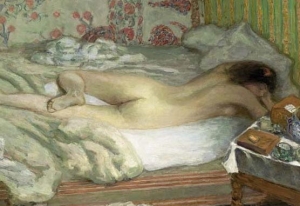
When Gertrude Stein published The Autobiography of Alice B. Toklas in 1933, all hell broke loose. Her hugely entertaining memoir tells the story of her early years in Paris, when her apartment in the rue de Fleurus became the most celebrated literary and artistic salon of the 20th century.
Readers were gripped by accounts of Gertrude’s Saturdays when visitors mingled with avant-garde artists, writers and collectors in rooms hung from floor to ceiling with the paintings by the artists she collected and promoted – including Renoir, Gauguin, Cézanne, Toulouse-Lautrec Matisse, Picasso and Juan Gris.
Her account of those years became an instant bestseller, but within the Stein family circle its publication caused consternation. For in it, Gertrude implied that she alone discovered Matisse and Picasso, downplaying the contribution of her two brothers Leo and Michael, and of Michael’s wife Sara. In truth, the four siblings acquired no fewer than 180 works by Matisse and Picasso alone, and all four were equally generous in providing financial and moral support to unknown artists. Leo was particularly scathing about the way his self-promoting sister wrote him out of the story. “Practically everything that she says of our activities before 1911 is false both in fact and implication… God what a liar she is!”
The massive exhibition devoted to the Stein Family that opens tomorrow at the Grand Palais sets the record straight. As the show documents in works of art, written and spoken words and scores of photographs, the Steins may not have been midwives at the birth of modern art, but they were certainly in the delivery room. What’s more, by admitting into their Saturday soirées anyone, whether they were interested in progressive painting or not, the Steins did as much as anyone to promote the culture of modernism. In the years when Picasso did not exhibit publically, the only way to see his work was to show up at an evening either with Gertrude and Leo in the rue de Fleurus or with Michael and Sara around the corner in the rue Madame. Matisse’s colour-saturated portraits and landscapes looked much less alarming when seen in a domestic setting, hanging alongside Renoirs or Gauguin, than they did in the scrum of the Salon d’Automne.
An educated, upper middle-class family originally from Pennsylvania, the Steins had money, but not a great deal of it, and were Jewish, but not religious. It was Leo who set the ball rolling when in 1902 he settled in Paris after two years studying art history in Florence. Shy and introspective, he was the driving force behind the collection and was able to recognise the ways in which young artists built on the achievements of the giants of French art in the 1870s such as Degas, Renoir, Cézanne and Manet.
This is could see that Picasso’s Boy Leading a Horse looked back to Cézanne’s Bathers, and Matisse’s Blue Nude, Memory of Biskra (1907) to the reclining nudes of Giorgione and Titian by way of Manet’s Olympia. It was Leo who (with Gertrude) bought Cézanne’s Woman with a Fan and he who acquired masterpieces from Picasso’s blue and rose periods. Leo defied conventional taste to purchase Matisse’s Lady in a Hat from the Salon d’Autumne of 1906 – not to mention owning the same artist’s Joy of Life, now in the Barnes Collection. Little wonder that Alfred Baar, the first director of the Museum of Modern Art, said of Leo that “for the two brief years between 1905 and 1907 he was possibly the most discerning art collector in the world”.
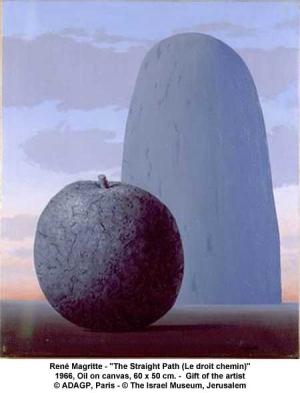
The Israel Museum will put up for sale 38 rare artworks, with an estimated value of $17 million. The museum plans to use the proceeds to upgrade its collection. Sotheby's will sell the artworks in a series of auctions, beginning on November 2, 2011, in New York, and ending in February 2012 in London.
The art up for sale includes "Le droit chemin" oil by surrealist Rene Magritte, estimated at $2.5-3.5 million; works by Camille Pissarro and Marc Chagall, estimated at $1.5-2.5 million per painting; and works by Chaïm Soutine, Pablo Picasso, and other important artists.
This is an extraordinary event that will likely echo through the international market. Museums rarely sell pieces from their collections. The Israel Museum's decision highlights the difficulties in improving their collections through donations and acquisitions budgets. Reasons for this situation include the economic crisis since 2008, which has caused donors to reduce large donations to the arts. Even before the crisis, especially in the preceding decade, soaring prices for top works of art made it difficult for museums to buy works of art.
The Israel Museum has set up an acquisitions team to help it create an organized system of acquisitions, but the process is quite complicated. Sometimes, there is competition for newly recognized important works art, and not just for already valuable pieces. Museums, which always have budget constraints, are struggling. For example, reports claim that New York's MOMA has bought the important piece "The Clock" by Christian Marclay, currently on display at the Israel Museum in its first display in a leading museum.
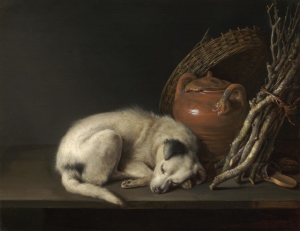
A little white dog with black ears is curled up asleep next to a large clay jar and a bundle of kindling. His carefully rendered fur seems to glow against the muted colors of the background.
Gerrit Dou’s “Sleeping Dog” of 1650 is a tiny painting -- 6.5 by 8.5 inches -- yet it’s also one of the most memorable in a superb exhibition of 17th-century Dutch and Flemish art now on view in San Francisco. Featuring the collection of Rose-Marie and Eijk van Otterloo, it’s the latest of four major shows to open in the city this summer.
The works, which show ordinary life closely observed and often bathed in extraordinary light, features all the key genres and almost all the big names.
There’s a fine Rembrandt portrait of an old woman in a black dress with white collar, a moving Hals portrait of a preacher, a colorful village scene by Brueghel, flower bouquets by Bosschaert and de Heem, a luminous Amsterdam cityscape by van der Heyden and an amusing ice-skating scene by Avercamp. All that’s missing is a Vermeer.
“Dutch and Flemish Masterworks From the Rose-Marie and Eijk van Otterloo Collection” was organized by the Peabody Essex Museum and runs through Oct. 2 at the Legion of Honor, Lincoln Park. Information: +1-415-750-3600; http://www.famsf.org/legion.
‘The Steins Collect’
The curatorial triumph of the summer is “The Steins Collect: Matisse, Picasso, and the Parisian Avant-Garde” at the San Francisco Museum of Modern Art.
Writer and Bay Area native Gertrude Stein and her brothers, Leo and Michael, had remarkable taste and timing. They moved to Paris in the early 1900s and soon began collecting the newest wave of modern art, Matisse and Picasso, as well as the more established Cezanne, Renoir, Bonnard and others.
Their apartments became de facto museums of modernism and salons for the artistic elite of Paris. Gertrude was Picasso’s champion. Leo, Michael and his wife, Sarah, favored Matisse. (And others: Michael and Sarah later commissioned Le Corbusier to design a modernist house for them.)
The sprawling show brings together much of the now scattered Stein collection. It features iconic works like Picasso’s monumental 1905-06 portrait of Gertrude, now in the collection of the Metropolitan Museum in New York, and Matisse’s 1905 “Woman With a Hat,” now part of the San Francisco museum’s collection.
Along with about 40 Picassos, 60 Matisses and works by more than a dozen other artists, the exhibition offers scores of photographs of the Steins, Gertrude’s partner Alice B. Toklas, their apartments and their arty circle, encapsulating a remarkable period.

Picasso invented the beach. Well, maybe not single-handedly. But if French 19th-century artists such as Degas defined the traditional seaside, it was Picasso in the 1920s who gave a visual form to the modern hedonism of sand and sensuality sur la plage.
It was in that decade that the French Riviera became the image of sultry decadence, a mythic status it would keep through the 20th century until global resorts offered still steamier thrills. Picasso had money by then, and decamped to the south of France every summer. The 20s Riviera inspired one of the century's definitive novels, Tender is the Night by F Scott Fitzgerald. It also inspired great paintings, as Picasso mythologised the new beach culture in works that go far beyond the elegance of impressionist marine painting.
Two Women Running On the Beach, painted in the summer of 1922, is a monument to the new freedoms that swept the world after the first world war. At the time, everywhere from Hollywood to the high street, the stiff conventions of the Victorian age were thrown off. In Picasso's joyous and powerful painting, in the classical style he was then enjoying, women who resemble Greek mythological maenads run in loose Grecian dresses that hang down to reveal big, round breasts; their hair flows free, they hold hands in pure abandon. It must have been a good summer. The sea and sky are slightly different shades of Mediterranean blue: a brilliant cartoon of the seashore.
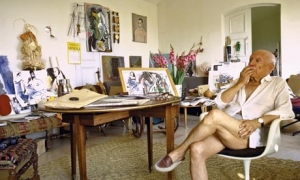
Where artists go, money follows. It is a law of real estate that any quarter deemed bohemian is a step away from becoming intensely desirable and valuable. And so it is with Mougins, where the likes of Picabia, Cocteau, Man Ray and Leger used to visit. Picasso came here in 1936, and to the fury of his hotel's owner painted on the walls of his room. He was instructed to cover over his work, but he returned, by then not exactly skint himself, spent the last 12 years of his life in Mougins. He died there in 1973. Now this little hill town, of pre-Roman origins – with its simple, compact buildings wound tightly into defensive circuits of curving streets – finds itself suffused with wealth.
A few miles inland from Cannes, Mougins offers more cultured pleasures than that sometimes tawdry place, while still gathering some of its stardust. It has been popular with Winston Churchill, Elizabeth Taylor and Catherine Deneuve, and is famous for its restaurants; there's even an annual festival of gastronomy. The town is also packed with art galleries – not all as good as its restaurants, but encompassing every imaginable genre, from picturesque landscapes to teeth-grating conceptual installations. On the town's edge the five-star Le Mas Candille hotel spreads over green slopes towards an exceptional view. In contrast with the ancient buildings, the hotel is spacious and, with a sophisticated restaurant, designed to serve the pleasures of a certain kind of international moneyed class.
Mougins is part of a landscape that attracted JG Ballard, where hardy peasant buildings, a fabulous climate, gorgeous light, beautiful scenery and modern leisure make a rich-poor, new-old hybrid that is neither town nor country. Glossy 4x4s hurtle round tiny lanes made for carts. Old agricultural buildings are remade as refined retail outlets. The forms of hard productive work co-exist with hedonism. Now the union of money and art has bred a new, intriguing institution, the Mougins Museum of Classical Art.
This is the creation of Christian Levett, a 41-year-old investment manager whose company Clive Capital once lost $400m in a week, yet seemed to shrug off the loss as if it were a coin dropped in the gutter. Levett has said, as a simple statement of fact, that he was "financially very successful at a young age" and by his early 30s "had established several homes". He has also been an avid collector ever since, aged seven, he discovered an interest in coins. His greatest passion is now classical antiquities, which developed after he discovered, to his surprise, that it is still possible to buy them.
Levett has strong connections with Mougins, where he owns two of the finest and most famous restaurants, La Place des Mougins and L'Amandier, both recently revamped under the direction of chef Denis Fétisson (previously of the Michelin two-star Le Cheval Blanc in Courchevel). La Place offers a richly extravagant tasting menu of foiegras, lobster, prawns and pigeon for ¤75 a head; L'Amandier, a white-walled former almond mill with terraces commanding the view towards the perfume-making town of Grasse, is more informal.
"It is a blessing for Mougins that Levett has fallen in love with it," says a young local, adding that "he might own the whole village one day". The result of this double passion, for antiquities and for the town, is the museum, where his collection, the result of seven years work, is now on show. His collaborator on the project has been Mark Merrony, an archaeologist who became editor of the art and archaeology magazine Minerva, which Levett now owns; he remains editor-in-chief of the magazine, but most of his energies have recently gone into the museum, of which he is now the director.
Among its many busts and statues the collection includes the Cobham Hall Hadrian, bought at Christie's for $900,000 in 2008; there are vases, glassware, jewellery and coins, and an array described as the world's "largest private collection of ancient armour", including a helmet dented with a blow that was probably fatal to its wearer. There are Egyptian reliefs and coffins, and a small collection of erotica. There are also works by old masters and modern artists, such as Rubens, Degas, Rodin, Braque, Picasso – and on to Mark Quinn, Damien Hirst and Antony Gormley – intended to show the continuity of classical themes into the present. "These themes have been in the human psyche for 2,500 years," says Merrony. "That's the hardest thing to understand about humanity: the psyche."
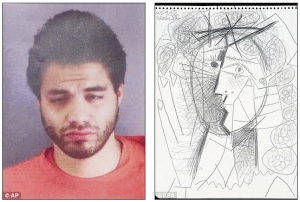
A man arrested last week after being spotted calmly walking out of a gallery with a $200,000 Picasso under his arm had an extensive collection of stolen works hidden in his studio apartment, police have said.
Mark Lugo, 30, was apprehended on July 6 after allegedly stealing Picasso's 1965 'Tete de Femme' from the Weinstein Gallery in San Francisco the previous day.
A subsequent raid on his one bedroom apartment in Hoboken, New Jersey, revealed a small museum's worth of art - 11 stolen pieces in total, worth more than $500,000.
The works were taken from seven galleries in Manhattan and included a piece by Cubist master Fernand Léger and another Picasso sketch, authorities said.
After Lugo's arrest in San Francisco, police in New York reviewed CCTV footage from The Carlyle Hotel on the Upper East Side, which had a Léger piece stolen on June 28.
Officers are said to have recognised Lugo from the tapes, connecting him to the robbery of Léger's $350,000 1917 piece 'Composition aux element mecaniques' and enabling them to execute a search warrant on his Hoboken property.
At the apartment on Tuesday, police said they found the 11 stolen pieces of art, some of which were hung on the walls.
'There were about six of them displayed on the wall of the apartment. His whole apartment was filled with wine books, upper-crust living, paintings,' a police source told the New York Post.
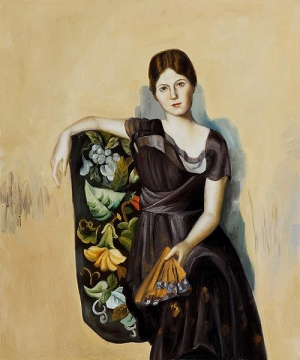
The beautiful, sad-looking Olga Kokhlova, a dancer with Diaghilev’s Ballets Russes, sits with her right arm draped over the back of a chair, a partially open fan in her lap. The dark floral patterns of her dress and the upholstery stand out against the flat background of pale gold.
Painted by Pablo Picasso in 1918, shortly before his marriage to Olga, the portrait is completely realistic in style.
With echoes of 19th-century neoclassicism and Japanese screens, it’s one of the surprises in an exhibition from the Musee National Picasso in Paris, now on view in San Francisco.
The “Portrait of Olga in an Armchair” came after a decade in which Picasso’s work had grown increasingly strange (many said outrageous), starting with his fascination for primitive art and evolving into his co-invention of Cubism with Georges Braque.
In Olga’s portrait, Picasso seems to be saying that he still knows how to paint the old-fashioned way. It also represents one of those stylistic about-faces that marked his prolific career.
The elegant show at the de Young Museum is organized chronologically, starting with the artist’s blue and rose periods in the first years of the 20th century. This is followed by a roomful of rough and finished studies based on African masks that led to the landmark “Les Demoiselles d’Avignon” of 1907.
The spooky “Woman With Clasped Hands,” whose blank face and body are rendered mostly in white, gray and black, is a standout from the period.
Wives, Lovers
Then we’re on to fully abstract Cubism, the realism of the post-World War I period, Picasso’s unique brand of surrealism in the late 1920s and 1930s, his politically themed work in the years before World War II and the looser, dreamlike images of his late period. He died in 1973 at the age of 91.
With Picasso changing muses as often as artistic styles, the show is also a survey of the women in his life.
After unsmiling Olga, there was the young blonde Marie- Therese Walter, often seen nude in bed; the serious photographer Dora Maar, who was the model for the “weeping women” studies that preceded the monumental antiwar “Guernica” of 1937; Francoise Gilot, a painter and writer; Jacqueline Roque, his second wife. And others.
The French government acquired the collection after Picasso’s death, in lieu of taxes, and while the museum’s home in Paris is being renovated, some of its best works are on worldwide tour.
|
|
|
|
|